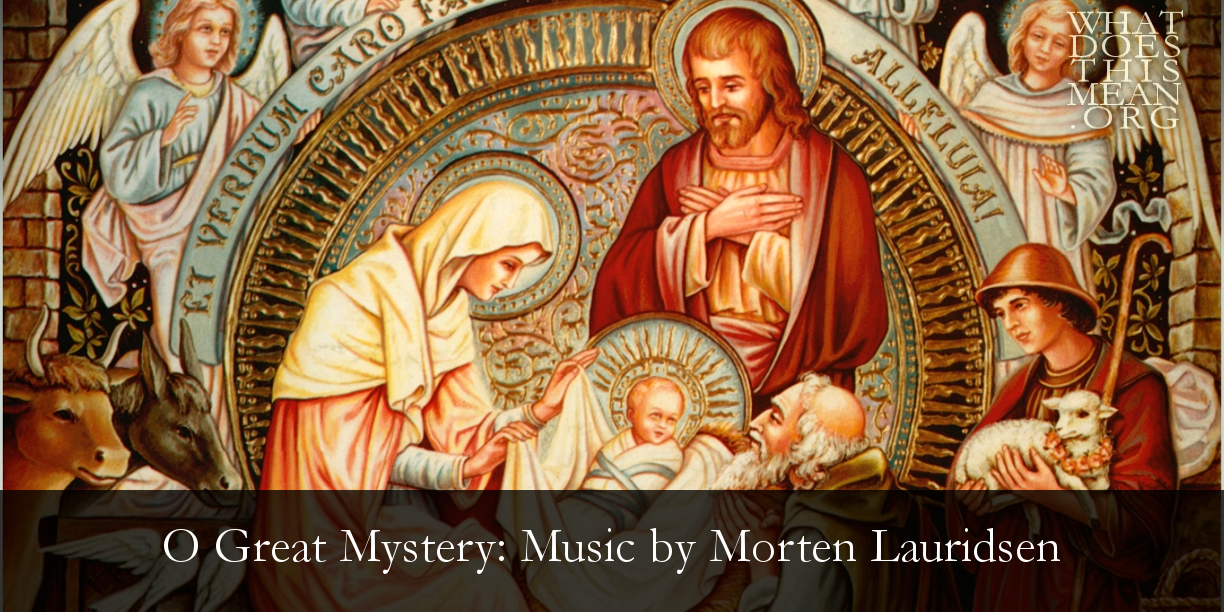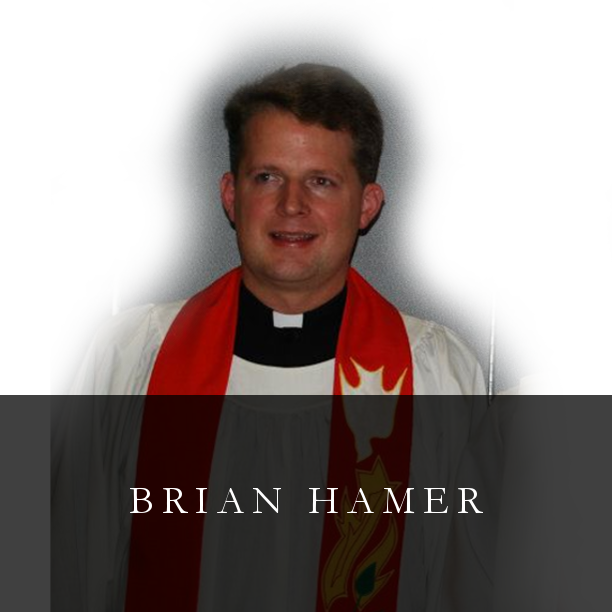| O magnum mysterium et admirabile sacramentum ut animalia viderent Dominum natum, jacentum in praesepio! Beata Virgo, cujus viscera meruerunt portare Dominum Christum. Alleluia! | O great mystery and wondrous sacrament that animals should see the newborn Lord lying in a manger! Blessed [is the] Virgin, whose womb was worthy to bear the Lord Jesus Christ. Alleluia! |
Great indeed, we confess, is the mystery of godliness:
[Christ] was manifested in the flesh,
vindicated by the Spirit,
seen by angels,
proclaimed among the nations,
believed on in the world,
taken up in glory.
The mention of animals might catch the hearer off guard at first reading, but one must not overlook any detail of the infancy of Christ. Consider, for instance, the following hymn stanza from the 5th century Christmas hymn from the Latin tradition, “From East to West”:
[Jesus] shrank not form the oxen’s stall / He lay within the manger-bed,
And he, whose bounty feedeth all, / At Mary’s breast Himself was fed.
The historical narrative of Jesus’ infancy is also foundational for this liturgical text, especially the Lukan texts on the Annunciation (1:26-38) and the visitation (1:39-45), perhaps most notably Elizabeth’s greeting to Mary, “Blessed are you among women and blessed is the fruit of your womb” (v. 42).
Through the centuries, this text has inspired numerous composers; so many, in fact, that our survey of musical settings of this text will require multiple columns over the coming years. I would like to begin with a living composer, Morten Lauridsen (b. 1943), Distinguished Professor of Music at the University of Southern California. The composer himself describes the unique inspiration for his 1994 setting of O Magnum Mysterium, which was premiered by the Los Angeles Master Chorale in 1994:
| And [Mary] gave birth to her firstborn son and wrapped him in swaddling cloths and laid him in a manger, because there was no place for them in the inn. | [Joseph] took down [Jesus’ body] and wrapped it in a linen shroud and laid him in a tomb cut in stone Where no one had ever yet been laid. |
The liturgical context of any musical setting of the “O Magnum” text is of course the Twelve Days of Christmas. Church musicians who schedule a festival of nine lessons and carols might schedule a setting of “O Magnum” to be sung after the ninth and final lesson (St. John 1:1-14) as the theological high point of the service and a transition to the Christ-Mass. Consider, for instance, the following video from Kings College Cambridge, where the service of nine lessons and carols originated:
| O God, who hast made this most holy night to shine with the brightness of the true light: grand, we beseech Thee, that, as we have known on earth the mysteries of that Light; we may also come to the fullness of its joy in heaven; through the same Jesus Christ, Thy Son, our Lord; who liveth and reigneth with Thee and the Holy Ghost: ever one God, world without end. Amen. (from The Brotherhood Prayerbook, p. 403) |
In his program notes for the CD, Lauridsen: Lux Aeterna, program annotator Peter Rutenberg writes, “In the history of music, heaven has played a willing matchmaker to a mere handful of composers and habitats: In the Renaissance, it was Byrd in London, Lassus at Munich, Palestrina for Rome.” The writer goes on to acquaint the finest composers and their respective cities through the ages (Mozart in Salzburg, Bach in Leipzig, Brahms in Vienna, etc.) and then writes, “The third millennium crests the horizon of our time amid the limelit dawn on Los Angeles and Morten Lauridsen” (RCM CD 19705). To be sure, the author of the liner notes probably overstates the situation, but he makes a point nonetheless. Not unlike Jesus’ origins in lowly Nazareth, the Lord has once again gifted His Church from a most unexpected place, Los Angeles -- O great mystery indeed! -- a profound reminder that the Lord has not abandoned His church, even when it seems that all has been lost to the raucous savagery of contemporary Christian music. O Magnum Mysterium by Morten Lauridsen is a vital contribution of our generation to the vast repertoire of sacred music for Christmas. In my estimation, it is worthy to stand alongside Nicolaus Herman’s (c. 1480-1561) timeless hymn on the same mystery that the Lord would deliver us by His incarnation and nativity:
[Christ] undertakes a great exchange, Puts on our human frame,
And in return gives us His realm, His glory, and His name.
He is a servant, I a lord: How great a mystery!
How strong the tender Christ Child’s love! No truer friend than He.
(Lutheran Service Book 389.5)



 RSS Feed
RSS Feed
